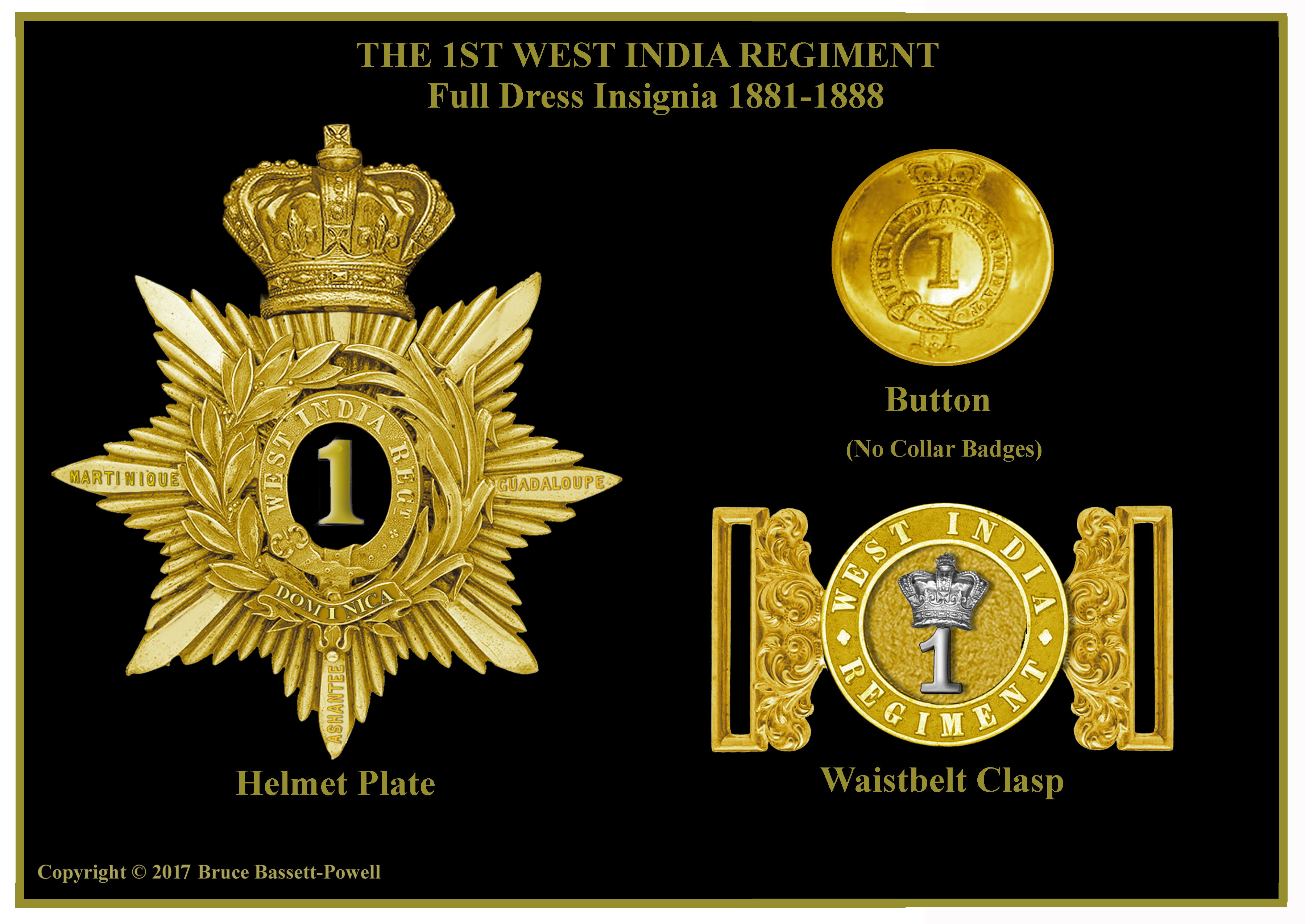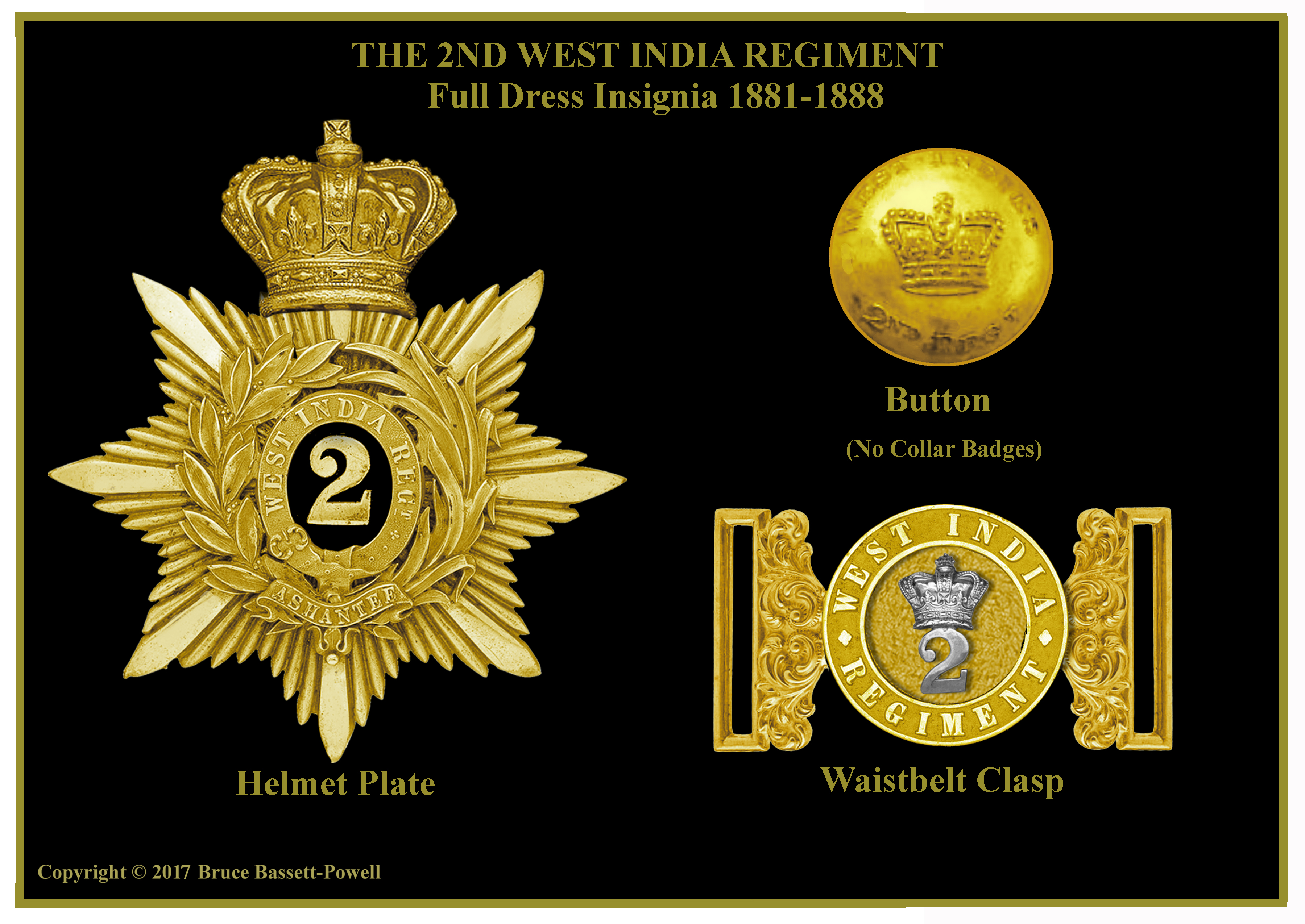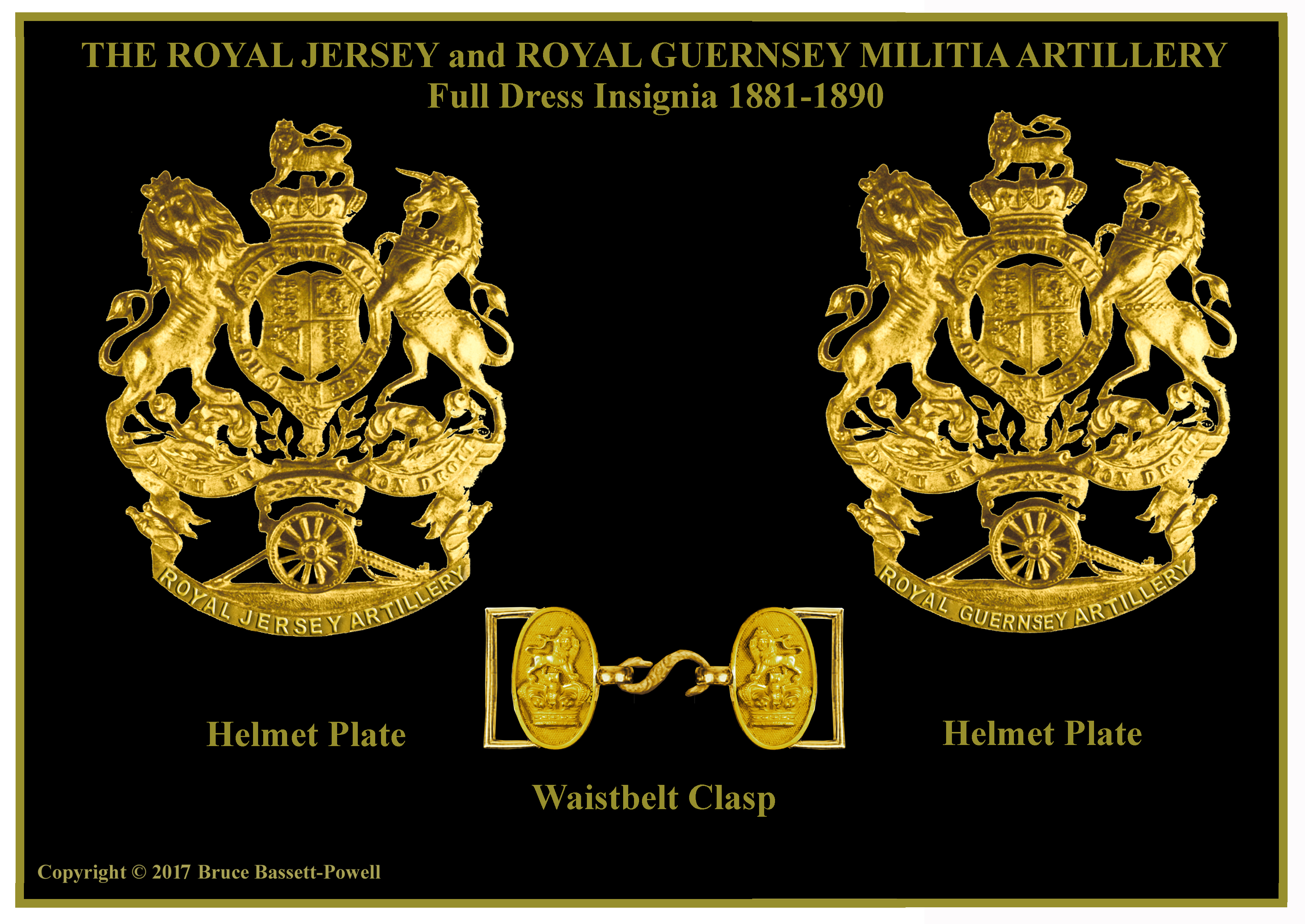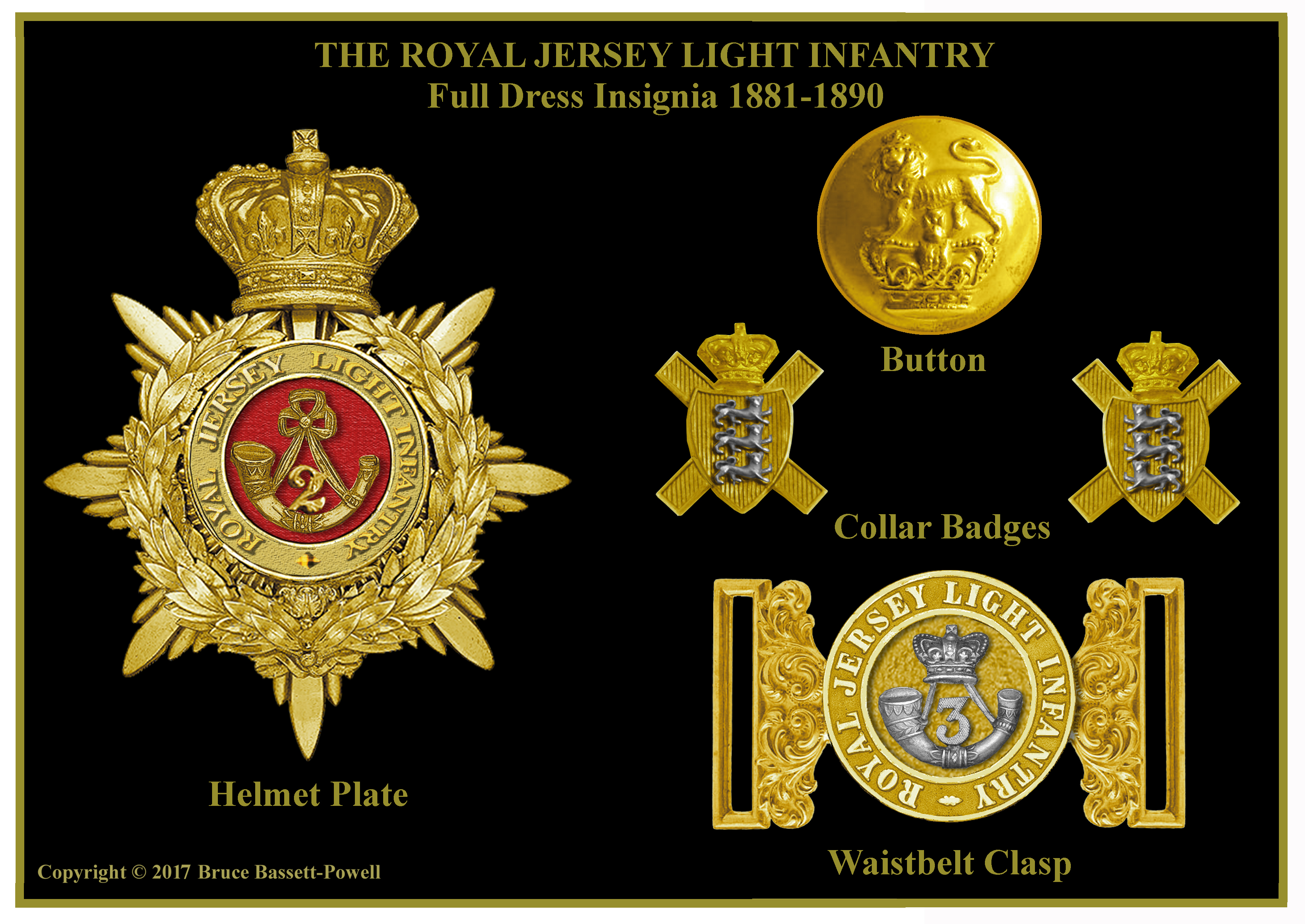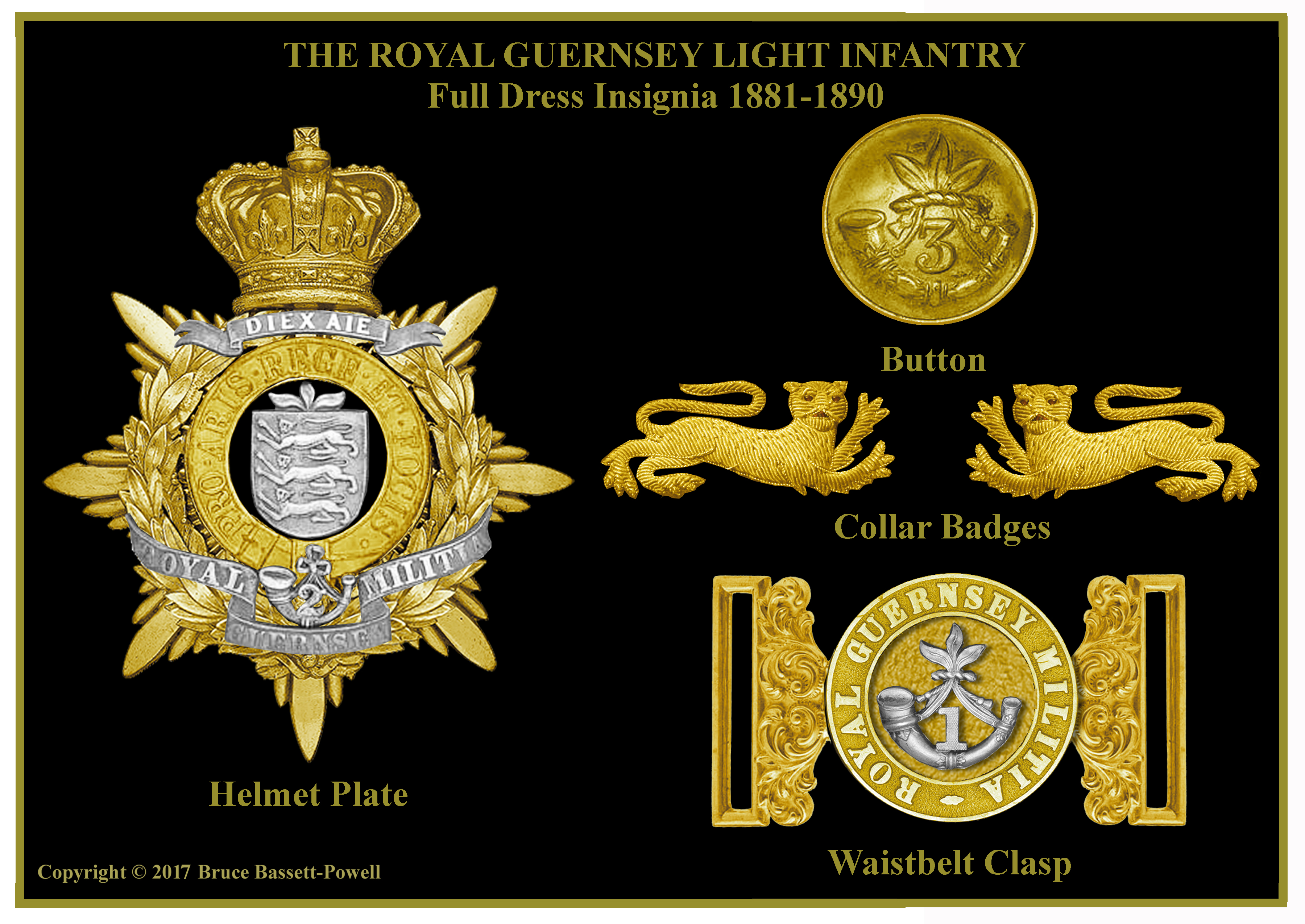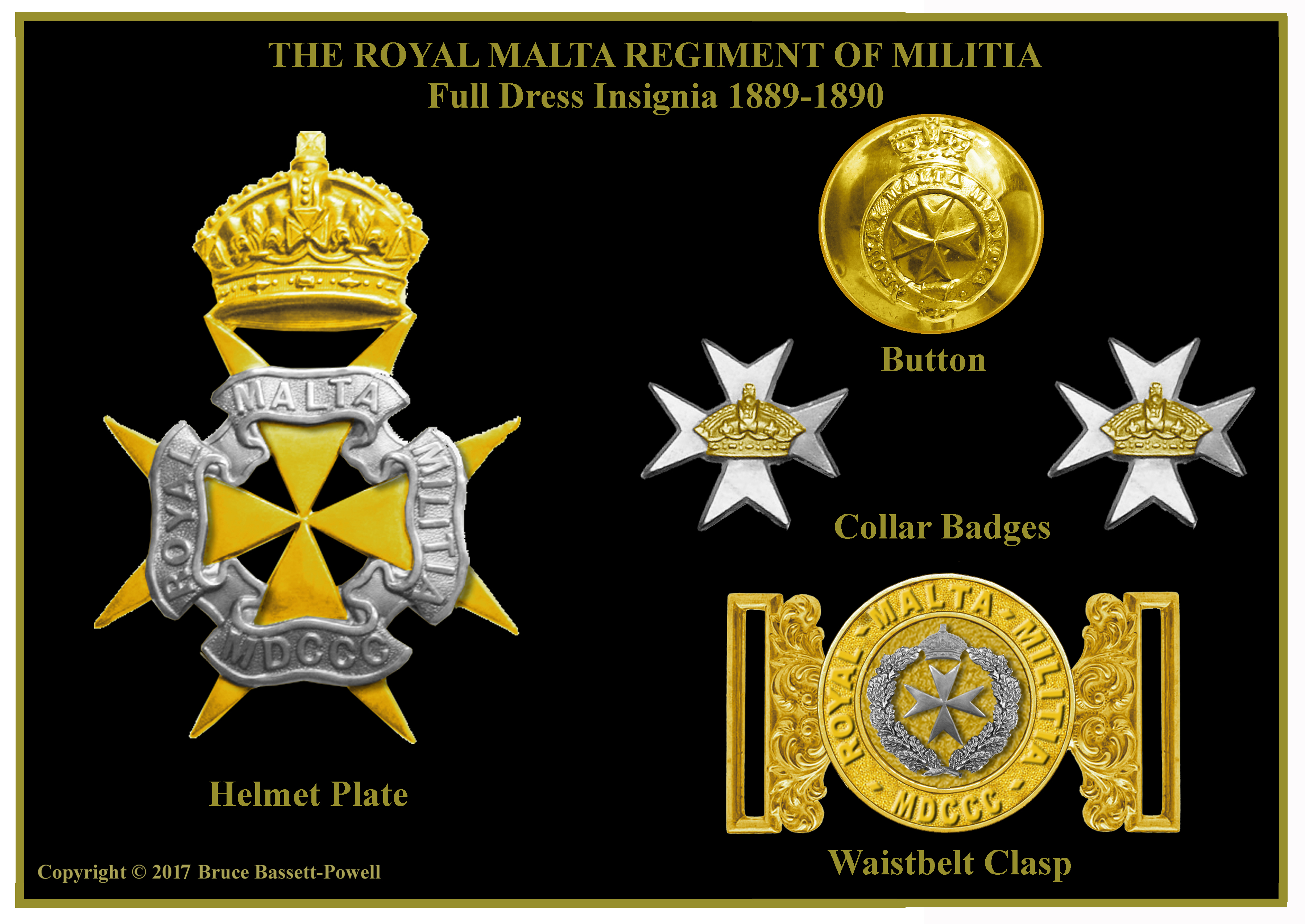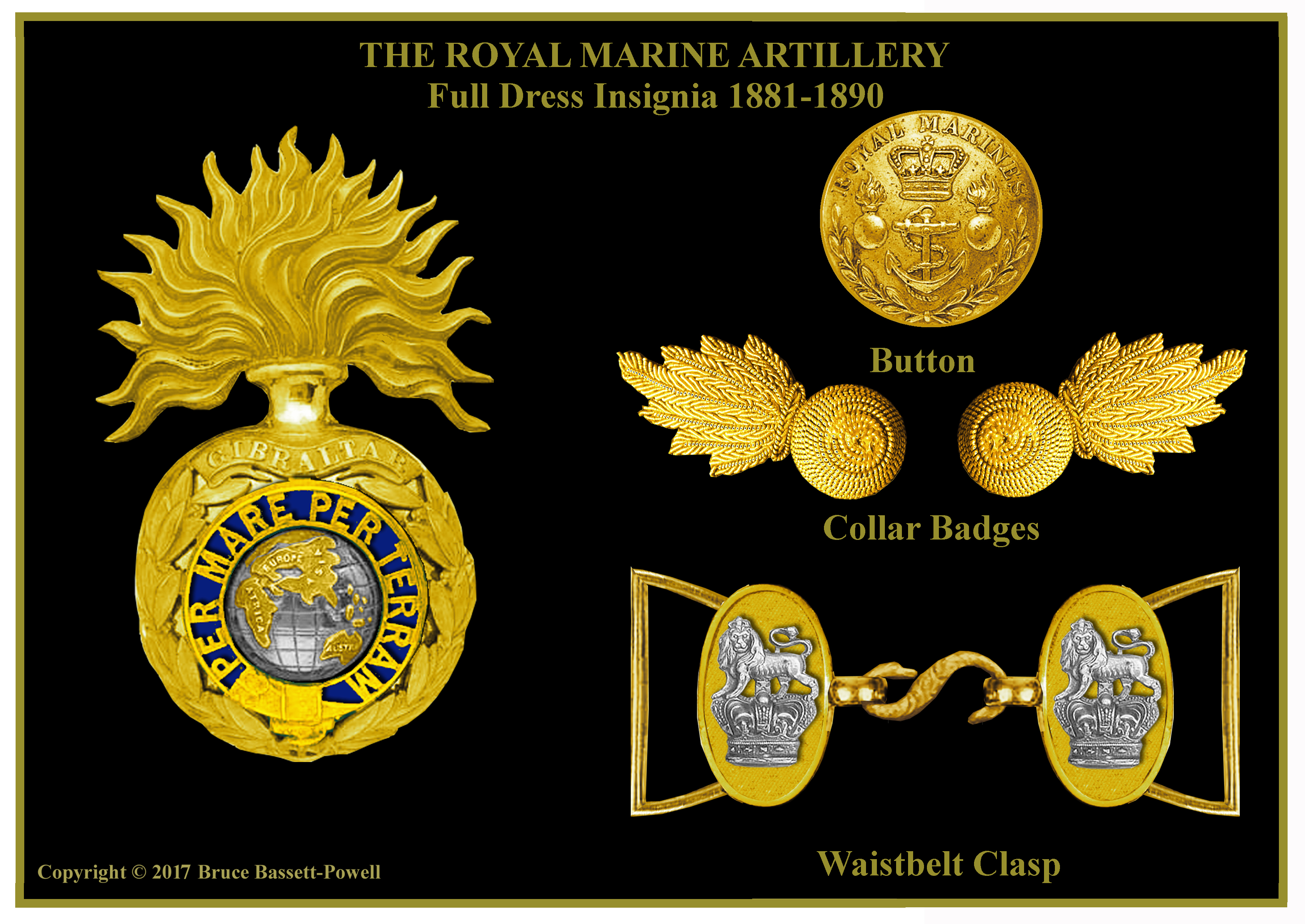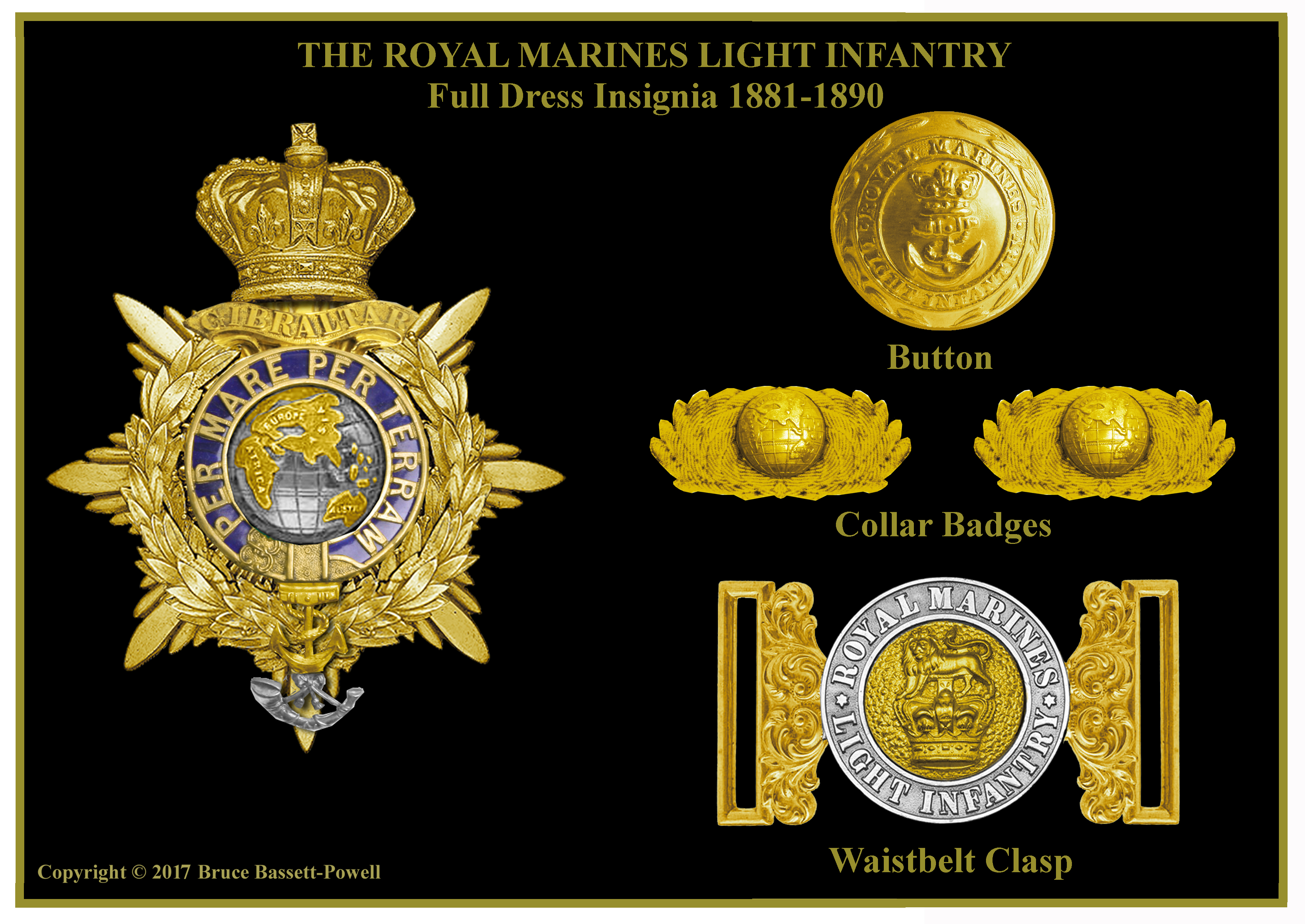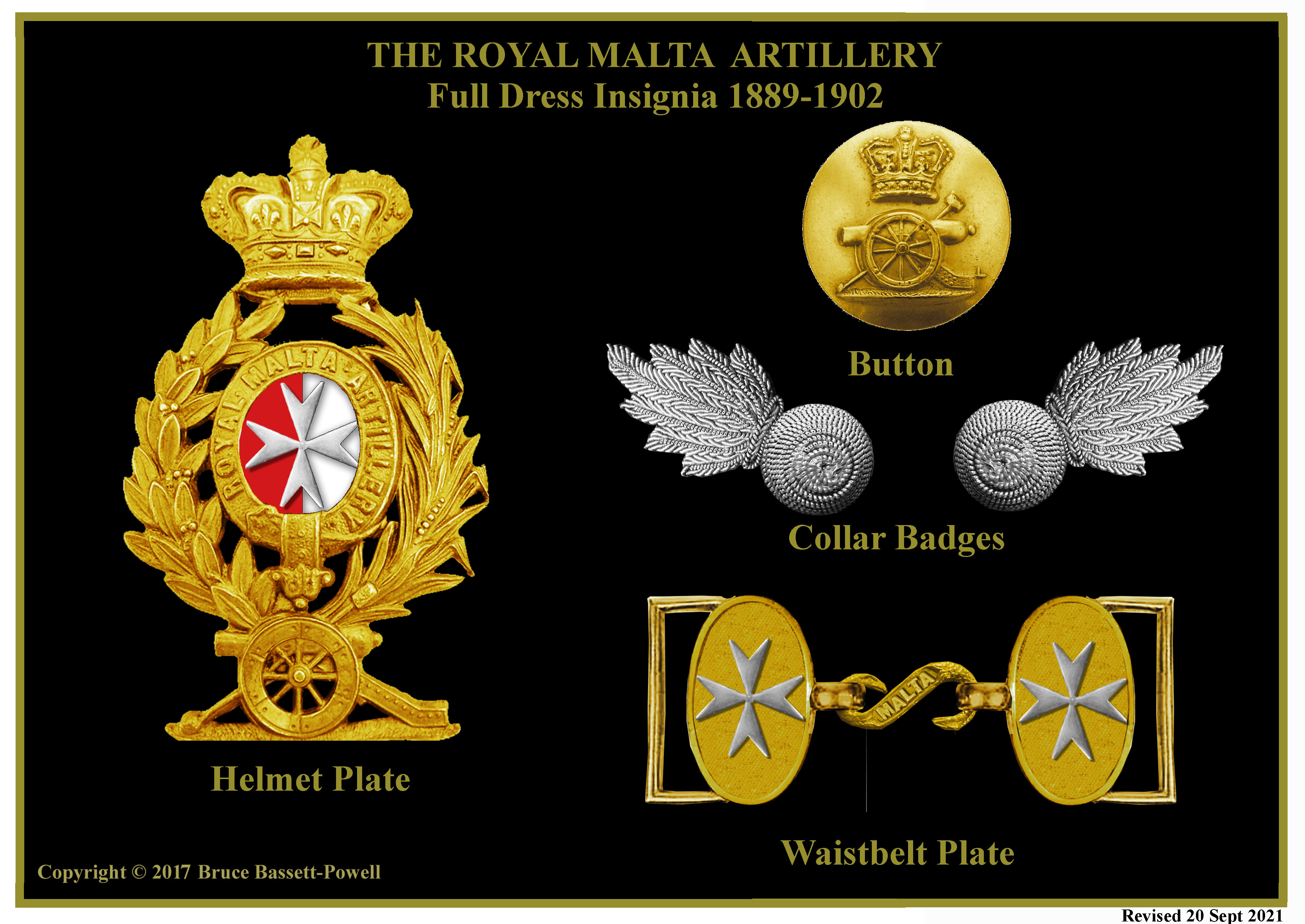Page 7
The 1st West India Regiment. A Garter Strap bearing the regimental title. A Wreath, half Bay Laurel and half Carolina Laurel. The latter commemorating the Regiment’s service in that part of North America during the French and Indian & Independence Wars. The honours Dominica, Martinique and Guadeloupe that commemorate the services of the regiment in 1809 and 1810. Also the honour Ashantee, which refers to the regiment’s part in the campaign of that name in 1873 and 1874.
The 2nd West India Regiment. A Garter Strap bearing the regimental title. A Wreath, half Bay Laurel and half Carolina Laurel. The honour Ashantee, which refers to the regiment’s part in the campaign of that name in 1873 and 1874.
The Royal Guernsey and Royal Jersey Militia Regiment Artillery. As for the regular parent regiment. The badge of the Royal Arms and supporters with a cannon, was granted in 1832, but without the mottoes Ubique and Quo Fas et Gloria ducunt.
The Royal Jersey Light Infantry Militia. The Coat of Arms of Jersey. A red shield with three gold leopards (or lions). Derived from the seal granted to the islands bailiff by Edward I in 1279. A Red Saltire, the true origins of which are unknown, although believed to be associated with early Christian influences. A Bugle Horn, representing the status as light infantry.
The Royal Guernsey Light Infantry Militia. The Coat of Arms of Guernsey. A red shield with three gold leopards (or lions), surmounted by a sprig of leaves. Derived from the seal granted to the islands bailiff by Edward I in 1279. A Gold Leopard, worn as a collar badge. A Bugle Horn, representing the status as light infantry. Note: On 6 January 1831 on the 50th Anniversary of the Battle of Jersey the Channel Island Militias were granted the 'Royal' prefix by King William IV.
The Royal Malta Fencible Artillery. The Gun surmounted by a Laurel Wreath, all encircling a Garter Strap bearing the regimental title and at the centre a Maltese Cross on a ground of red and black divided vertically. A Grenade, as per the regular parent regiment.
The Royal Malta Regiment of Militia. The Maltese Cross, whose origins lie with the ancient order of St John of Jerusalem and the Christian warrior knights of that order. The regimental title encircled and draped over the arms of the cross, all surmounted by the Imperial crown. The honour MDCCC (1800) in commemoration of its forebear’s services during the siege of Valletta from 1798 to 1800. A Wreath of Oak Leaves.
The Royal Marines Artillery. A Grenade, as per the Royal Regiment of Artillery, with which the Corps had long had close association. The Lion and Crown, which denotes a Royal regiment, was conferred by King George III in 1802. The "Great Globe", chosen in 1827 by King George IV in lieu of battle honours to recognise the Marines' service in every quarter of the world. Encircling Laurels, which are believed to honour the Corps gallantry during the capture of Belle Isle in 1761. The honour ‘Gibraltar’, which refers to the capture of Gibraltar by a force of Marines in 1704 and the subsequent defence of the fortress throughout a nine-month siege. The Motto ‘Per Mare Per Terram’ (By Sea By Land) that describes the Corps’ ability to fight both on-board ships of the Royal Navy, and in many land engagements ashore. The fouled anchor, incorporated into the emblem in 1747, is the badge of the Lord High Admiral and shows that the Corps is part of the Naval Service.
The Royal Marines Light Infantry. The Lion and Crown, which denotes a Royal regiment, was conferred by King George III in 1802. The "Great Globe" was chosen in 1827 by King George IV in lieu of battle honours to recognise the Marines' service in every quarter of the world. Encircling Laurels, which are believed to honour the Corps gallantry during the capture of Belle Isle in 1761. The honour ‘Gibraltar’, which refers to the capture of Gibraltar by a force of Marines in 1704 and the subsequent defence of the fortress throughout a nine-month siege. The Motto ‘Per Mare Per Terram’ (By Sea By Land) that describes the Corps’ ability to fight both on-board ships of the Royal Navy, and in many land engagements ashore. The fouled anchor, incorporated into the emblem in 1747, is the badge of the Lord High Admiral and shows that the Corps is part of the Naval Service. A Bugle Horn, representing the Corps’ status as light infantry.
NEXT: APPENDIX I
FOOT GUARDS AND INSIGNIA CHANGES AFTER 1881



